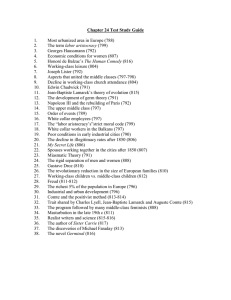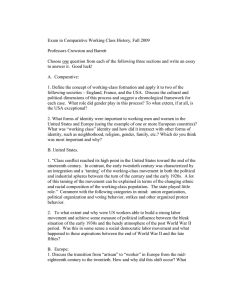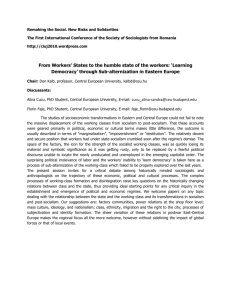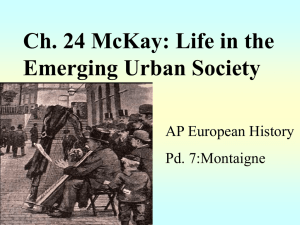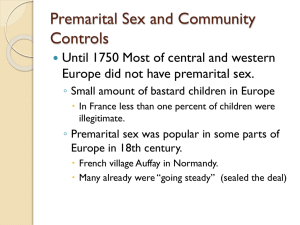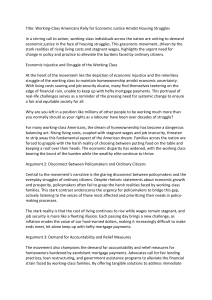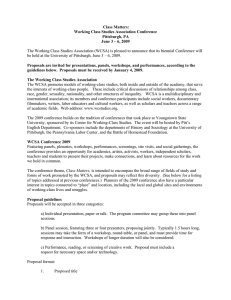Birth of the Modern Family
advertisement
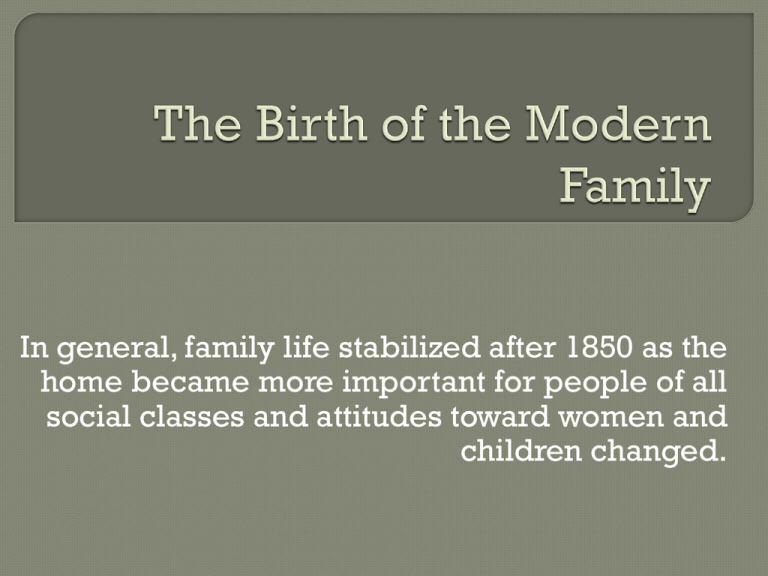
In general, family life stabilized after 1850 as the home became more important for people of all social classes and attitudes toward women and children changed. During the 18th and early 19th centuries, family life had become destabilized High rates of illegitimacy (reaching 40% to 50% of all births) Widespread premarital and extramarital sexual contact. These rates varied from region to region but were higher in urbanized and industrialized areas By the middle of the 19th century the family situation had changed Illegitimacy rates declined Population growth was accomplished by a decline in death rates As fewer children died young, parents limited the number of their offspring through various contraceptive methods then available Parents of all classes were more devoted to their children and more invested in preparing them for future success Breastfeeding children personally rather than employing a wetnurse increased. Abandonment of illegitimate children declined. The birthrate declined and family size shrank to about 6 in the 1890s and to about four in the 1920s. Gender roles in the family changed as separate spheres became the ideal and in many cases the practice, especially when real wages rose after 1850. Women were limited to household roles, such as supervision of servants, and had few legal rights. The family was no longer an economically productive unit, except in working-class families where the husband could not support the family, and also in the retail business. Religion became less important in working-class families, although they continued to baptize their children. Most working-class families continued to live close to kinship groups. • Government services for the poor barely existed so people relied on their families for help particularly in case of unexpected deaths to cover funeral expenses and take care of those left behind, and to aid in case of sickness or old age. Romantic love rather than arranged marriage became the new ideal, particularly in the working classes where economic considerations were not relevant. • In the middle-class, arranged marriages remained an important way to improve the family social connections and economic prospects. • Middle class men often married late, after they had become economically established, and chose younger wives who had been under the careful supervision of their parents and this age gap was a common source of marital tension. Married and unmarried couples went out together to pubs or music halls or concerts. Public transportation systems made it possible for many families to move to better housing and to have weekend excursions.
